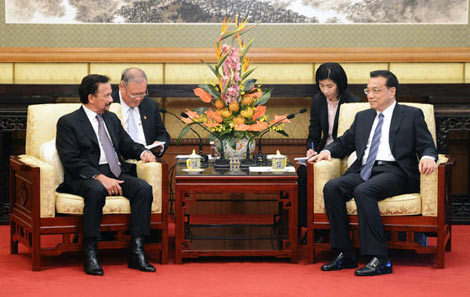
"The RQFLP will be a great step forward to attract capital into the mainland PE market by providing a good vehicle for PE funds to target those mainland companies by using the offshore yuan. As the PE investors will ultimately exit their PE investments through initial public offerings, this will present as a step forward to develop the mainland capital market as well," Ernst & Young Greater China Transaction Advisory Services Leader Bob Partridge told China Daily.
The launch of the RQFLP program means that Hong Kong can capitalize its offshore yuan financing center role in fostering mainland PE industry development. The city with its bureaucratic structure, taxation regime, PE professional talent supply and geographical proximity to the mainland will also help serve as a regional hub to contribute to the mainland PE industry development.
The mainland PE industry is flourishing in recent years due to the burgeoning economic growth in the country and the fact that mainland private enterprises and SMEs are deprived of funding by the mainland financing infrastructure which is geared heavily to lending to State-owned enterprises.
According to Asian Venture Capital Journal, PE fundraising activities on the mainland have grown exponentially recently, from $13.7 billion in 2007 to $38.8 billion in 2011.
Despite the booming growth of the PE industry, the mainland PE industry is fragmented with more than 10,000 venture capital and PE firms at the end of 2011, managing nearly 2 trillion yuan ($313.9 billion) in assets, according to National Development and Reform Commission.
Tougher regulations
The mainland PE market experienced a slowdown in 2012 compared to 2011 due to the economic slowdown of the Western and mainland economies. The slump of the mainland domestic share market in 2012 also curtailed mainland PE activities as PE firms cannot obtain a higher valuation when they exit their PE investments via IPOs.
Tougher regulation by the mainland financial regulatory bodies regarding IPOs and the lack of investor interest for mainland companies listing on exchanges in other markets also dented the mainland PE activities in this year.
According to Ernst &Young data, the number of PE deals targeting mainland companies from January to October 2012 amounted to 296 with a total value of $7.7 billion, representing a decline in both volume and total value of about 45 percent each from the same period in 2011.
The PwC data revealed that in the nine months of 2012, there were around 360 PE deals recorded on the mainland, compared to more than 800 PE deals in the whole of 2011.
Amid the unfavorable market trend, the local accountant advisory firms reckoned that the mainland PE industry is still in good fundamental shape.
"PwC is optimistic toward the mainland PE market starting in the second quarter in 2013 due to the confluence of the three factors: the demand for capital in the country's private sector, the excess of investment capital earmarked for China which is held by the PE community and pressure to spend that capital; and a pipeline of PE exits, many of which will come to market by way of mergers and acquisitions, as well as the more traditional IPO route (on the mainland)" PwC's Brown said.
"We predict the market momentum of the mainland PE market will revive and expect the value and the number of PE deals will soar 20 percent in 2013 compared to 2012," Ernst & Young's Partridge noted.
 'Cat model' to dazzle Shanghai auto show 2013
'Cat model' to dazzle Shanghai auto show 2013
 Models at Tokyo modified car show
Models at Tokyo modified car show
 Shanghai Fashion Week focuses on domestic brands
Shanghai Fashion Week focuses on domestic brands
 Angel-dress models at Shandong auto show
Angel-dress models at Shandong auto show
 Safe and Sound
Safe and Sound
 Theater firms scramble for managers
Theater firms scramble for managers
 Premier pledges closer ties with Brunei
Premier pledges closer ties with Brunei
 Volkswagen's all-new GTI at New York auto show
Volkswagen's all-new GTI at New York auto show